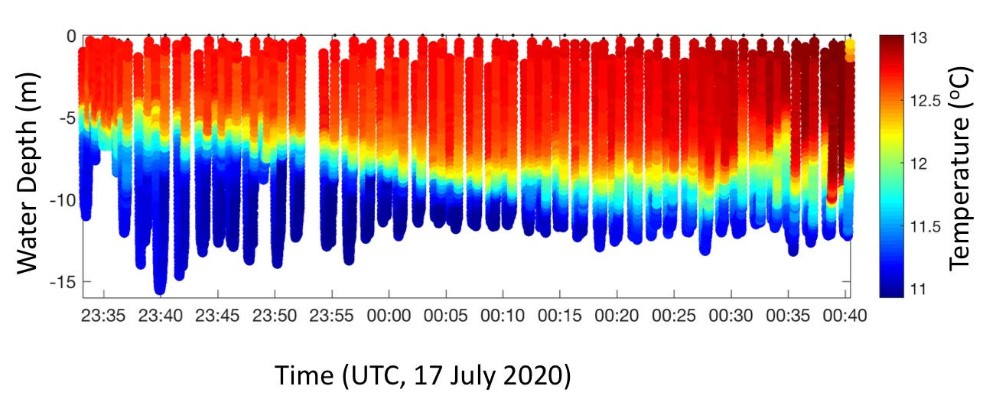By Jillian Soller, Brendan Higgins, and Adam Peck-Richardson
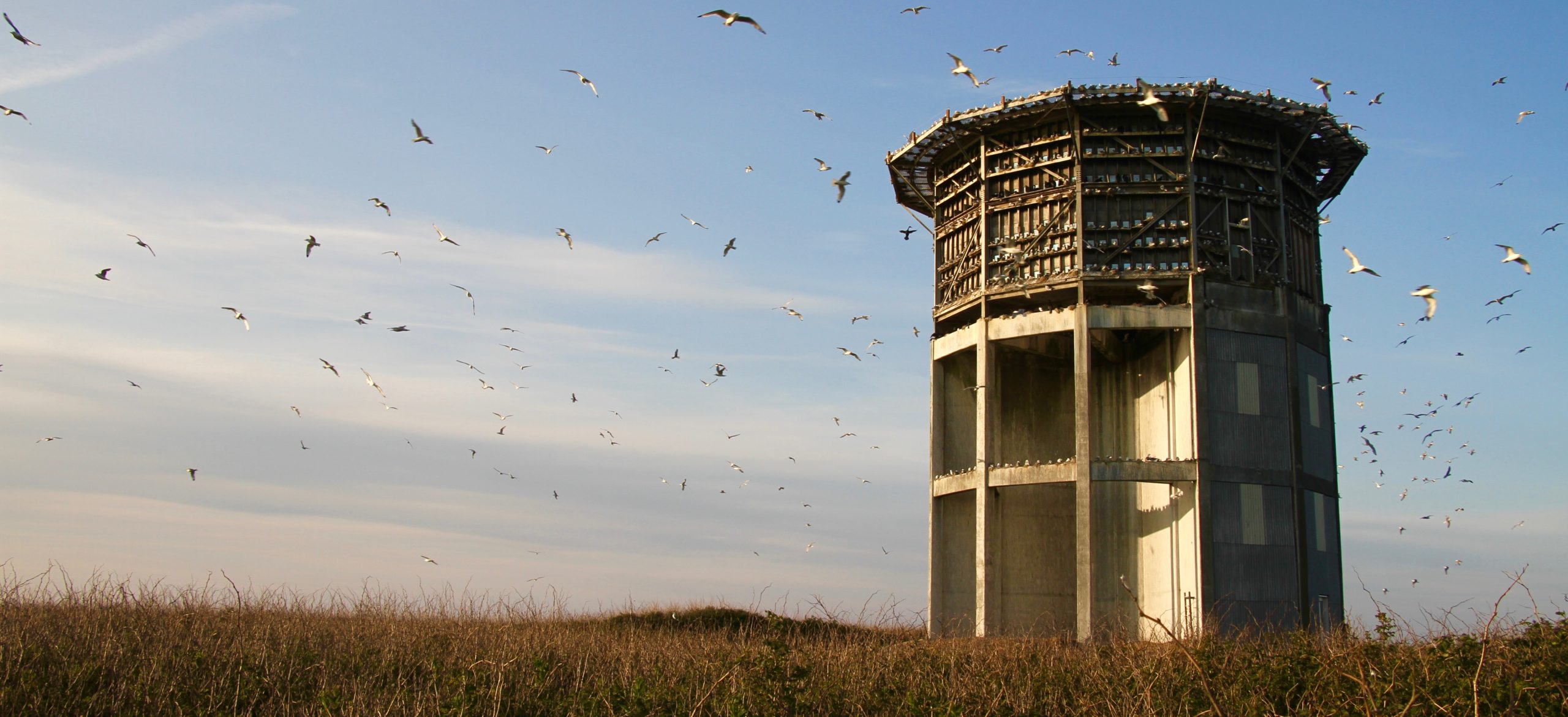
We are drafting this blog during our last few days on Middleton Island. Our field season here flew by and this year’s chicks are beginning to fledge. We tagged 21 pelagic cormorants nesting on the seabird research tower and data are streaming in through the cell phone data network. For background on the seabirds and researchers that call Middleton Island home, and for an introduction to our work, check out our previous blog post: “A field season on Middleton Island: Tracking pelagic cormorants in the Gulf of Alaska.”
Getting to Know Pelagic Cormorants
Pelagic cormorants are medium-sized, piscivorous seabirds that inhabit rocky coasts from the Baja Peninsula into northern Alaska, and across the Aleutian Island Chain to Siberia. The second smallest of the six extant species of cormorant in North America, pelagic cormorants weigh between 1.5 and 2 kilograms with a wingspan of about 1 meter. Generally thought of as having all black plumage, they are quite colorful when viewed up close. During the breeding season their feathers shimmer with iridescent green, blue, and purple tones and the exposed skin around their eyes and bill becomes bright red.
Pelagic cormorants mostly forage along the nearshore seafloor and nest either singly or in large colonies, typically on steep cliffs above the water. The majority of the North American pelagic cormorants nest in Alaska, with an estimated population of 50,000 pairs. In the 1980s and 90s Middleton Island was home to the largest pelagic cormorant colony in the state with 2,300 pairs. However, the 1964 earthquake uplifted the island and the cliffs have since eroded into sloping bluffs. This loss of nesting habitat lead cormorant numbers to decline steeply. Today, fewer than 200 pairs nest on the island.

Building on a Research Legacy
Despite their broad distribution, pelagic cormorants are relatively poorly understood. Prior tagging studies on Middleton have shed some light on pelagic cormorants’ foraging behavior by examining dive depth, duration, and frequency (Kotzerka et al. 2011, Stothart et al. 2016). We are expanding on this knowledge by deploying GPS tags with integrated depth, temperature, motion, and salinity sensors. By examining where and how deep cormorants dive, we can make useful inferences about their ecology and about the places they inhabit.
Previous work has shown that cormorants breeding here spend the winter in southeast Alaska and northern British Columbia. One bird banded here in 2005 was even resighted in 2008 on Galiano Island in the Salish Sea (Hatch et al. 2011). We will continue to track a portion of our tagged cormorants through their post-breeding migration. Long term GPS tracking is made possible by solar panels integrated into the tags.
Cormorants as Oceanographers
A primary goal of our cormorant tagging work is to push the limits of what is possible for a seabird tracking project. In addition to studying cormorant behavior, we are also focused on collecting high-resolution oceanographic data as the birds swim, dive, and forage in coastal marine waters. To do this successfully we need reliable tags with specialized sensors. The newest tag models, which we are currently testing, include fast response thermometers and conductivity sensors (CTDs). If successful, these sensors will allow us to collect water temperature and salinity measurements. When paired with pressure (depth) data, we can use a series of cormorant dives to construct 3D visualizations of the temperature and salinity structure through the water column (see figures below).
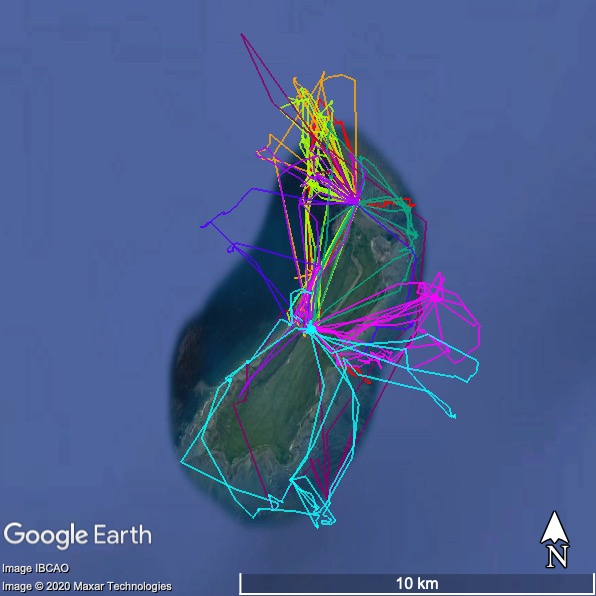

Tag Effects
It is a challenge to study the effect that researchers have on an animal by capturing and fitting it with a tag. In particular cliff nesting cormorants can be challenging to capture at their nests, recapture, or observe. The lab-like setting of the colony on Middleton Island and the nesting population of color-banded individuals (from years of previous research) offered us a rare opportunity to closely monitor individuals after we captured and tagged them.
Our approach
We assess tag effects by comparing the behavioral responses of the individuals that we captured and tagged with a control group of birds that had not been captured in 2020. We approached this in three different ways. First, we will compare the productivity of tagged nests versus untagged nests. We intensively monitored a subset of tagged and untagged nests during daylight hours (3:30 am to midnight). By recording the time each parent spends attending the nest, and how often they feed their chicks, we will compare the contribution of tagged to untagged parents. Our third angle of inquiry is based on nest attendance. We checked tagged nests and control nests five times a day to record which pair member is attending the nest. These data will add to our knowledge of how our study species is affected by our handling and tagging activities and better inform future research efforts.
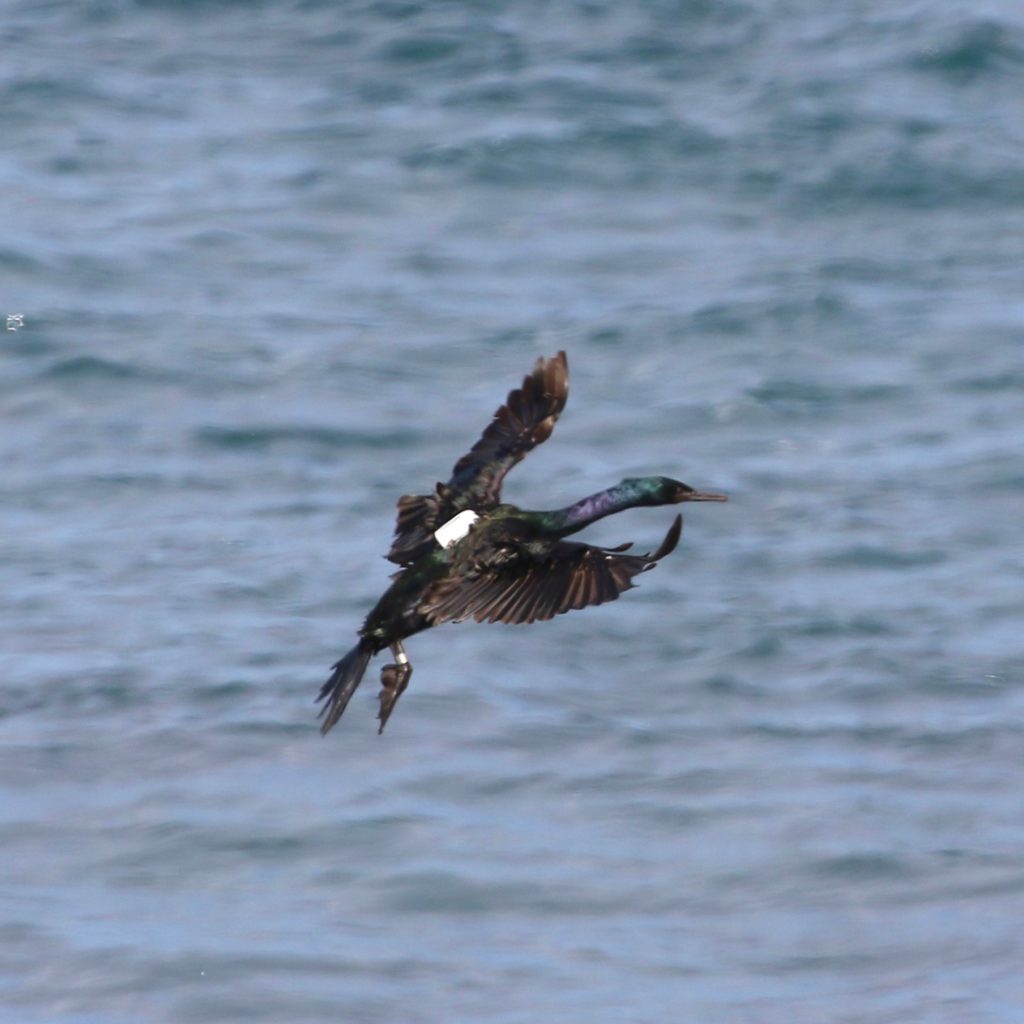



Future Research – Scaling Up
Middleton Island is an ideal venue to test our tags and tagging techniques. The tower provides a unique opportunity to reliably capture and tag cormorants, observe tagged individuals, and recover tags. The lessons learned from this season’s effort will help us refine our tagging methods, streamline our data management and analysis techniques, and assess how well our oceanographic GPS tags are performing in the wild. We will then apply these lessons to the next study location.
In late 2020 and early 2021 we will be working with collaborators at the United Arab Emirates University to tag Socotra cormorants nesting in the UAE and in Bahrain. Our work will focus on the movement ecology of this incredible species and water circulation processes in the Arabian Gulf.
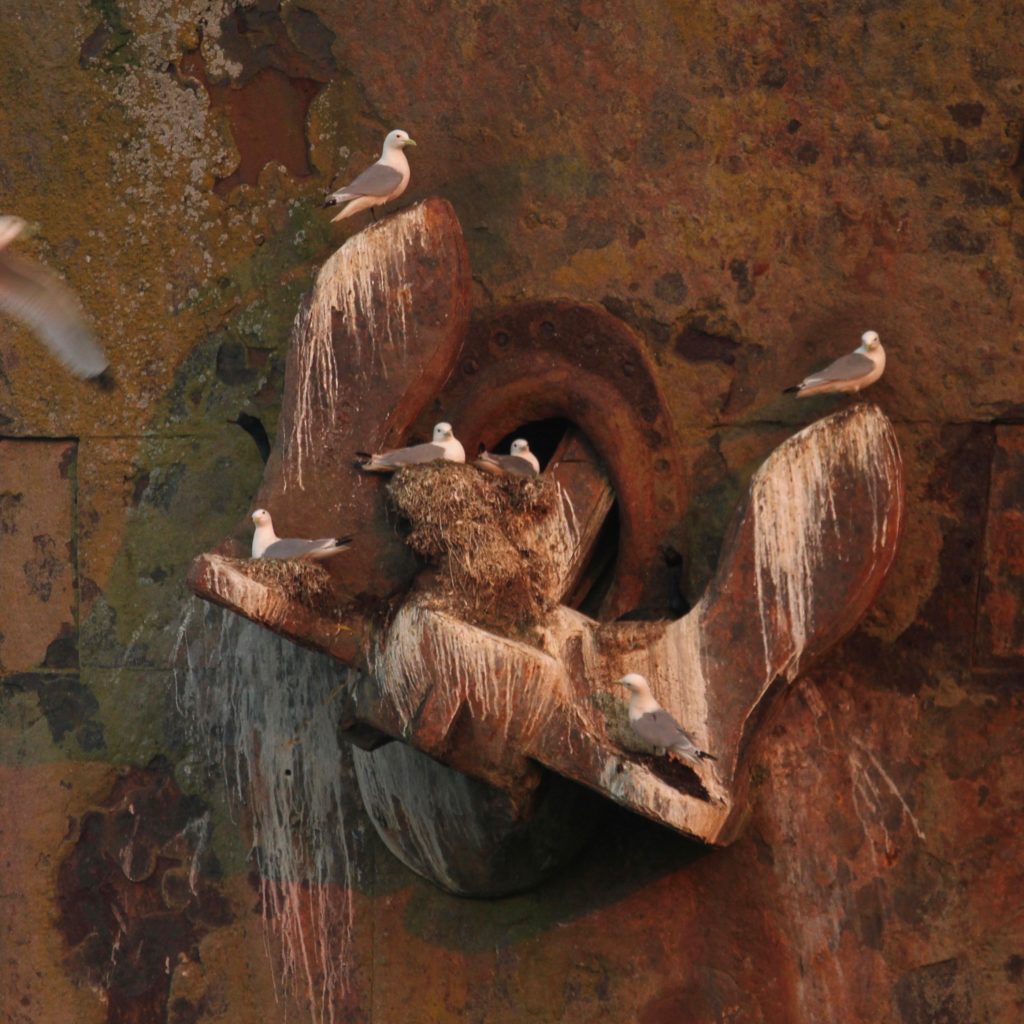




References
Hatch, S. A., V. A. Gill, and D. N. Mulcahy. 2011. Migration and wintering sire of Pelagic Cormorants determined by satellite telemetry. Journal of Field Ornithology 82: 269-278.
Kotzerka, J., S. A. Hatch, and S. Garthe. 2011. Evidence for foraging site fidelity and individual foraging behavior of Pelagic Cormorants rearing chicks in the Gulf of Alaska. The Condor 113: 80-88.
Stothart, M. R., K. H. Elliot, T. Wood, S. A. Hatch, and J. R. Speakman. 2016. Counting calories in cormorants: dynamic body acceleration predicts daily energy expenditure measured in pelagic cormorants. Journal of Experimental Biology 219: 2192-2200.

